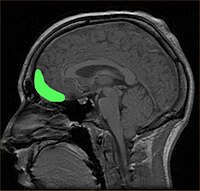
Strategies for stimulus selective stopping in the elderly.
Sign Up to like & getrecommendations! Published in 2017 at "Acta psychologica"
DOI: 10.1016/j.actpsy.2016.12.011
Abstract: This study consisted of two primary aims: (1) to determine if different age groups exhibited different strategies (based on their behavioral reaction time [RT] patterns) while performing a stop-signal task and (2) whether there were… read more here.
Keywords: signal; stop signal; signal task; stimulus selective ... See more keywords

Alcohol affects the P3 component of an adaptive stop signal task ERP.
Sign Up to like & getrecommendations! Published in 2018 at "Alcohol"
DOI: 10.1016/j.alcohol.2017.08.012
Abstract: BACKGROUND The P3 component of the event-related potential (ERP) has been particularly useful in alcohol research for identifying endophenotypes of alcohol-use disorder (AUD) risk in sober subjects. However, practice and/or fatigue reduce P3 amplitude, limiting… read more here.
Keywords: stop signal; adaptive stop; task; signal task ... See more keywords

Response inhibition on the stop signal task improves during cardiac contraction
Sign Up to like & getrecommendations! Published in 2018 at "Scientific Reports"
DOI: 10.1038/s41598-018-27513-y
Abstract: Motor actions can be facilitated or hindered by psychophysiological states of readiness, to guide rapid adaptive action. Cardiovascular arousal is communicated by cardiac signals conveying the timing and strength of individual heartbeats. Here, we tested… read more here.
Keywords: response inhibition; stop signal; signal task;

Associations of Hyperactivity and Inattention Scores with Theta and Beta Oscillatory Dynamics of EEG in Stop-Signal Task in Healthy Children 7–10 Years Old
Sign Up to like & getrecommendations! Published in 2021 at "Biology"
DOI: 10.3390/biology10100946
Abstract: Simple Summary Most studies on ADHD have been focused on the comparisons between healthy subjects and clinical patients. The dimensional approaches propose that the main pathological behavioral domains are distributed in the normal population and… read more here.
Keywords: stop signal; hyperactivity inattention; inattention scores; signal task ... See more keywords